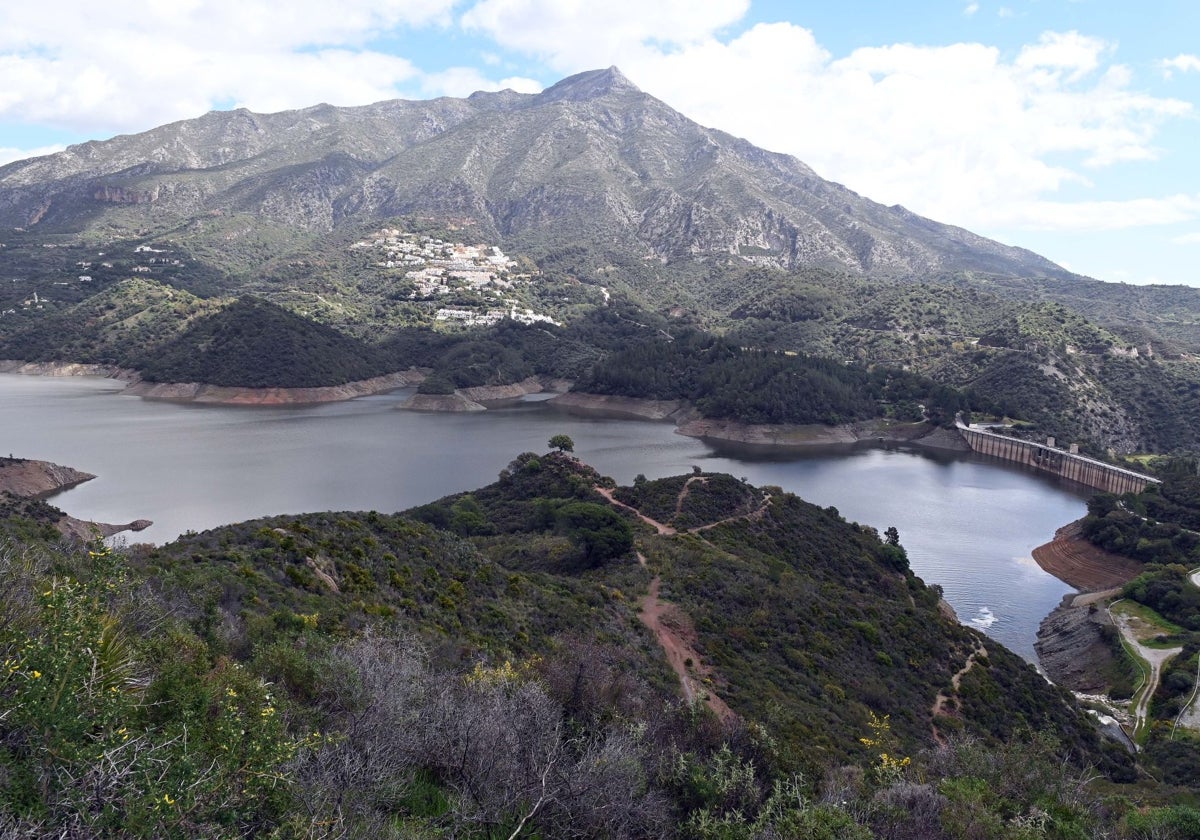Malaga's reservoirs face spring with highest level of water reserves since February 2022
Some 171 million cubic metres of water are currently stored in reservoirs across the province, around 28% of the total capacity
In the last few years, March has become one of the wettest months, with storms that contribute to reservoirs across the province of Malaga. When we take into account the rainfall currently passing through the area, it is expected that this meteorological spring (starting 20 March) will be beneficial for water reserves. According to official data, this year reservoirs have already recorded the highest levels in the last three years - a record that alleviates the drought of the last two years.
Too much optimism, however, is not recommended, as the province still suffers from deficits. Nevertheless, the Junta de Andalucía's Hidrosur network has noted the storage of more than 171 million cubic metres of water in provincial reservoirs, which is 28% of their capacity and 25 million cubic metres fewer than the previous best record from February 2022 (196.9).
The Rojas (Churriana) bypass now allows up to 500 litres per second to be exchanged in both directions along the coast
How much water is there?
This is the best figure in terms of stored reserves since the summer of 2023. The current situation is even better than last year's, when the runoff of March kept feeding reservoirs until the middle of May. This year, rain is expected to continue improving the reserves throughout March and April.
In terms of supply, 171 million cubic metres would be enough to supply the province for more than a year and a half. The margin and the reading must be done by river basin. Currently, only Axarquia is at red level, indicating serious drought. At the same time, La Viñuela reservoir has three times the reserves it had at this time last year.
The greatest relief is on the western strip of the Costa del Sol between Torremolinos and Manilva, which is currently in a moderate drought state. However, if it were not for the technical formalities of the drought plan, the area would be in a normal situation. The La Concepción reservoir near Marbella is above 40 million cubic metres, which is 70% of its full capacity. For the first time in history, it has been the reservoir with the most water in the province.
What will improve the situation even more is the completely renovated desalination plant in Marbella, which will serve as a backup capable of producing 20 million cubic metres per year, starting this summer. If we add the 10 million cubic metres from the Guadalmansa and Fuengirola wells, plus each municipality's own resources, we have a year of tranquillity ahead of us.
Malaga city
It should also be remembered that the Rojas (Churriana) bypass already allows up to 500 litres per second to be exchanged in all directions, so that the Axarquia area, the coast and Malaga city could be supported in the event of surpluses on one side and deficits on the other.
In a less promising situation are the reservoirs that supply Malaga city, but the robustness of the system allows for an even greater buffer, more than a year and a half. Wells already account for 20% of the city's consumption. In April, the Bajo Guadalhorce aquifers will be active, hopefully delivering 900 litres per second per day (the city needs 1,650, more or less).
In any case, the headwater reservoirs (Guadalhorce, Conde de Guadalhorce and Guadalteba), adding Casasola, which, during this period of drought, has provided good support (it has even provided 50% of consumption in some weeks), exceed 95 million cubic metres. This means a moderate level of drought, with a reserve of 24 million cubic metres before reaching the red level.
Axarquia
The main Viñuela reservoir currently holds nearly 36 million cubic metres. This is three times more than last year and enough water for almost two years of urban consumption. However, as in the Guadalhorce, the countryside will still have to wait to use water from the reservoir.
The advantage is that up to 21 million cubic metres per year of reclaimed wastewater is already being produced in this eastern region, and further progress is awaited on the desalination plant project, which is expected to produce 25 million cubic metres per year (half for irrigation and half for Axarquia's households).

